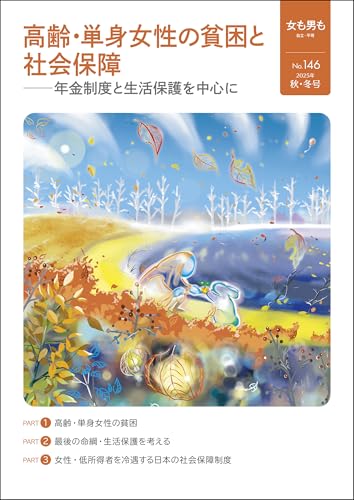 WAN女性学ジャーナル
WAN女性学ジャーナル
< WAN女性学ジャーナルトップへ戻る
-
博士論文データベースを通して見る女性学/ジェンダー研究の40年
2019/01/01
- リサーチ
博士論文データベースを通して見る女性学/ジェンダー研究の40年
論文概要:
女性学・ジェンダー研究(以下、WS/GSとする)の知を集積して活用に供する資源に1つを加えることを目的に、また、そこに日本のWS/GSのアイデンティティが蓄積されていくようにとの意をも含んで構築し、2012年8月の公開を経て個人で管理運営してきた「女性学/ジェンダー研究博士論文データベース」(以下、WSGSDDBとする)は、2017年9月に、認定特定非営利活動法人ウィメンズ アクション ネットワークWomen's Action Network(以下、WANとする)に移管された。
本稿では、823本(2018年7月末現在)のWSGSDDB登録論文の情報を切り口に、日本のWS/GSの40年間の蓄積を示すとともに、WAN移管によってて共同化・公共化が進んだことによるデータベースの今後の活用可能性の拡大について記したい。
関連する論文
-
なぜ彼女たちは殺されたのか? ―韓国映画『パラサイト 半地下の家族』で 見過ごされたジェンダー表象を読み解くー
2024/12/15
- リサーチ
コメンテーター:高 美哿(こう みか)
論文概要:
論文概要 韓国映画ポン・ジュノ監督作品『パラサイト 半地下の家族』は「階級」を巧みに描いた映画として世界中で高評価を受け、カンヌ国際映画祭や米国アカデミー賞など著名な映画祭で賞を総なめにし、韓国映画の評価を世界的に高めた。『パラサイト』の主要な登場人物は男性5人、女性5人で、このうち、男性ふたり、女性ふたりが殺害された。男性が殺された理由は明確だが女性ふたりの殺された理由は判然としない。にもかかわらず、おびただしく登場した映画評からは「なぜ彼女たちは殺されたのか?」というジェンダー視点がほぼ看過されている。それはなぜか?階級とジェンダーというインターセクショナリティの視点から、『パラサイト』のジェンダー批評を実践すると共に、なぜジェンダー視点が見逃されたのかという問いを解き明かすのが本論文の課題である。 Abstract The Korean film "Parasite" directed by Bong Joon-ho has received worldwide acclaim for its skillful depiction of "class" and has won awards at prestigious film festivals such as the Cannes Film Festival and the Academy Awards, raising the reputation of Korean films worldwide. The main characters in “Parasite” are five men and five women, of whom two men and two women were murdered. The reason for the murder of the two men is clear, but the reason for the murder of the two women is unclear. Despite this, the numerous film reviews written in Japanese have largely ignored the gender perspective of "Why were these two women killed?" The goal of this paper is to practice gender critique of “Parasite” from the perspective of class and gender intersectionality, and to unravel the question of why the gender perspective was overlooked.
> 論文を読む -
『女のからだ』(1974)とフェミニスト翻訳
2023/10/19
- リサーチ
コメンテーター:荻野 美穂(おぎの みほ)
論文概要:
本稿の目的は、1974年発行の『女のからだ―性と愛の真実』(ボストン「女の健康の本」集団著、秋山・桑原・山田訳編)を翻訳学のフェミニスト翻訳の視点から分析・考察することである。フェミニスト翻訳とは、翻訳を通して女性に対する偏見や差別を可視化し、読者の注意を喚起することで社会に異議を唱えようとするもので、1990年代後半から主にカナダで盛んに議論されるようになった。 『女のからだ』は、1970年に小冊子として発行されたWomen and Their Bodiesと1973年に商業出版されたOur Bodies, Ourselvesの日本語版である。原著は米国の女性グループ「ボストン『女の健康の本』集団」が女性のために編集した、女性のからだについての情報や知見、体験談を集めた本だ。中絶が違法であった時代に、中絶やセクシュアリティについて率直に語った本書は、アングラで出版されたベストセラーであった。今や原著は「女性の健康のバイブル」とも呼ばれ、通算約450万部のロングセラーとなっている。 本書を日本に紹介した『女のからだ』は、その翻訳自体がフェミニスト的行動であったことは疑いがない。しかしながら、本稿ではより踏み込んで、翻訳学におけるフェミニスト翻訳の視点から考えていく。具体的には、フォン・フロトー(von Flotow 1991)の分類による3つの翻訳方略-1. supplementing(補足すること)、2. prefacing and footnoting(序文や脚注で補足説明をすること)、3.hijacking(乗っ取ること)-に基づいて考察していく。 Abstract This research explores the Japanese book Onna no Karada—Sei to Ai no Shinjitsu (trans. Akiyama, Kuwabara & Yamada 1974; literally, Women’s Bodies: The Truth of Sexuality and Love) from a feminist translation perspective. Feminist translation began to be discussed in the late 1990s, mainly in Canada, and aims to make females visible in translated texts as a way to object to women’s subordinate position in society. Onna no Karada—Sei to Ai no Shinjitsu is the Japanese version of Women and Their Bodies (The Boston Women’s Health Book Collective 1970) and Our Bodies, Ourselves (The Boston Women’s Health Book Collective 1973). In the 1970s in the United States, abortion was illegal and the books that dealt with sensible topics such as abortion or sexuality became underground bestsellers. Thus, translating the texts itself was no doubt a feministic action. However, this study takes a further step to investigate the Japanese text in detail to see how the text was translated by the three feminist translators. For the text analysis, this paper applies the three feminist translation strategies proposed by von Flotow (1991): 1. Supplementing; 2. prefacing and footnoting; and 3. hijacking.
> 論文を読む -
仕事と子育ての両立を選択した女性たちのサバイバル Survival of women who chose to balance work and child-rearing
2022/06/30
- リサーチ
コメンテーター:亀田 温子(かめだ あつこ)
論文概要:
近年、出産後の女性の就業継続率が上昇し、M字の底も徐々に上がってきた。しかし、未だに女性が主たる担当者として子育てを担っている状況が続いている。高学歴女性に焦点を当てた先行研究の中には、高学歴女性が「子育てを手放さないことが、性別役割分業構造を強化している」という批判もある。高学歴女性は、学歴の地位表示機能による「よい子育て」への規範的圧力や、仕事での自己実現というプレッシャーによって、出産後も仕事と子育ての両立を試みるが、その結果男なみ発想で家事も育児もこなそうとするか、職場の子育て支援制度を利用しマミートラックで両立を図るかのどちらかになっており、そのいずれもが、むしろ性別分業構造を強化しているというのである。 そこで、本稿では、「高学歴女性が『子育てを手放さない』ことが、性別役割分業構造を強化してしまうのか」という問題関心のもと、以下の二つの問いを立てた。①女性たちが「子育てを手放さない」のは、規範的圧力やプレッシャーによるのか、自らの選択なのか。②女性たちが子育てを手放さないと性別役割分業は維持されるのか。その上で、江原由美子のジェンダー秩序論、ギデンズの自己アイデンティティ論に依拠し、仕事と子育てを両立している6人の高学歴女性にインタビュー調査を行った。その結果、女性たちは自らの選択として子育てを手放さずに就業を継続し、自らの「したい子育て」をするために、夫や祖父母、職場を交えた子育てのサポート体制を作りあげ、そうした彼女たちの行為が職場を変え、夫の意識を変えていったと語っており、女性が子育てを手放さなくても、ジェンダー秩序の変容の可能性があることを見出すことができた。 Survival of women who chose to balance work and child-rearing Abstract In recent years, the rate of women continuing to work after childbirth has increased, and the bottom of the M-shaped scale has gradually risen. However, women still remain in charge of child rearing as their primary responsibilities. Some of the previous studies focusing on highly educated women have criticized that the fact that highly educated women "do not give up child rearing reinforces the gender role division of labor structure. Due to the normative pressure for "good parenting" caused by the status indicator function of their academic background and the pressure for self-realization at work, highly educated women try to balance work and child rearing even after childbirth, but as a result, they either try to do both housework and childcare with a manly mindset or use the childcare support system at work to balance the two in a Mommy-Truck way. In either case, the gender division of labor is strengthened. Therefore, this paper asks the following two questions from the perspective of "whether the fact that highly educated women "do not give up child rearing" reinforces the gender role division of labor structure. (1) Are women's "refusal to give up child rearing" due to normative pressure or their own choice? (2) If women do not give up child rearing, will the division of labor be maintained? Based on Yumiko Ehara's theory of gender order and Giddens' theory of self-identity, we interviewed six highly educated women who are balancing work and child rearing. As a result, the women said that they created a support system for child rearing with their husbands, grandparents, and workplaces in order to continue working without giving up child rearing as their own choice and to do "the kind of child rearing" they wanted to do. We were able to find that there is a possibility of transformation of the gender order even if women do not give up child rearing. Translated with www.DeepL.com/Translator (free version)
> 論文を読む -
東大インカレサークルで何が起こっているのか ―「東大女子お断り」が守る格差構造- What Matters with the Intercollegiate Circles at the University of Tokyo?: The Reproduction of Gender Structure by the "No Women from the Tokyo University Allowed" Rule
2022/02/09
- リサーチ
コメンテーター:江原由美子(えはら ゆみこ)
論文概要:
東京大学において、「東大女子お断り」のサークルが問題となっている。これは東大女子の加入を禁じ、東大の男子と他大学の女子のみで構成される東大のインターカレッジサークル(以下インカレサークル)のことで、主にテニスやバドミントン、バスケットボールなどのスポーツサークルで多く見られる。 本稿では、 “なぜ東大女子は排除されなければいけないのか” という疑問を出発点とし、「東大女子お断り」を掲げるインカレサークルへのフィールドワークを通じて、インカレサークルの内部で何が起こっているのか明らかにした。調査方法としては、東大インカレサークルまたは学内サークルに所属する男女へのインタビューに加え、その中の1つのインカレテニスサークルに対する参与観察も行った。その中で、東大インカレサークルには男子優位のジェンダー秩序が存在し、「東大女子お断り」という閉鎖構造がそれを維持する二重の差別構造となっていると分かった。 東大インカレサークルにおける二重のジェンダー差別構造は、ジェンダー意識の低さに伴う罪悪感の無さ、偏差値ヒエラルキーに基づく男子の傲慢さと他大女子の低姿勢、インカレサークルに対する東大女子の嫌悪感など様々な要素が絡み合って成立していると推察される。東京大学という、国内で大きな影響力を持つ大学のサークル活動において男子優位の非対称なジェンダー秩序が再生産されていることは非常に大きな問題であると言えよう。 また追記として、本稿が執筆された2016年以降、「東大女子お断り」を掲げるサークルに対する大学側の処置により、「東大女子お断り」を堂々と掲げるサークルはなくなった。しかし裏で差別が続いている可能性もあり、更なる分析が求められるだろう。 This paper problematizes the intercollegiate circles at the University of Tokyo (abbreviation, Todai), supposedly a Japan's top university, which prohibits women of the same school from joining them. They consist of exclusively Tokyo University boys and girls from other universities (mainly women's universities), mostly among sports circles such as tennis, badminton and basketball. Starting from the question, "Why should women from the University of Tokyo be excluded?", this paper examines what is happening inside intercollegiate circles through fieldwork at intercollegiate circles with "No Todai women allowed "rules. In addition to interviewing with male and female members of the University of Tokyo intercollegiate circles and other on-campus circles, I conducted participant observation at one of the intercollegiate tennis circles. What I found is that those intercollegiate circles have a male-dominated gender order, and that the closed structure of "no Todai women allowed" circles has a double discriminatory structure that maintains this order. This asymmetrical gender order with male dominance has been reproduced in the circle activities of the University of Tokyo, a university with great influence in Japan, which is a very serious problem. As a postscript, since this article was written in 2016, there are no more circles that openly apply "no Todai women allowed" rules due to the university's measures against gender discrimination. However, it is likely that discrimination continues behind the scenes, and further analysis will be required.
> 論文を読む
 慰安婦
慰安婦 貧困・福祉
貧困・福祉 DV・性暴力・ハラスメント
DV・性暴力・ハラスメント 非婚・結婚・離婚
非婚・結婚・離婚 セクシュアリティ
セクシュアリティ くらし・生活
くらし・生活 身体・健康
身体・健康 リプロ・ヘルス
リプロ・ヘルス 脱原発
脱原発 女性政策
女性政策 憲法・平和
憲法・平和 高齢社会
高齢社会 子育て・教育
子育て・教育 性表現
性表現 LGBT
LGBT 最終講義
最終講義 博士論文
博士論文 研究助成・公募
研究助成・公募 アート情報
アート情報 女性運動・グループ
女性運動・グループ フェミニストカウンセリング
フェミニストカウンセリング 弁護士
弁護士 女性センター
女性センター セレクトニュース
セレクトニュース マスコミが騒がないニュース
マスコミが騒がないニュース 女の本屋
女の本屋 ブックトーク
ブックトーク シネマラウンジ
シネマラウンジ ミニコミ図書館
ミニコミ図書館 エッセイ
エッセイ WAN基金
WAN基金 お助け情報
お助け情報 WANマーケット
WANマーケット 女と政治をつなぐ
女と政治をつなぐ Worldwide WAN
Worldwide WAN わいわいWAN
わいわいWAN 女性学講座
女性学講座 上野研究室
上野研究室 原発ゼロの道
原発ゼロの道 動画
動画


![[広告]広告募集中](https://wan.or.jp/assets/front/img/side_ads-call.png)












